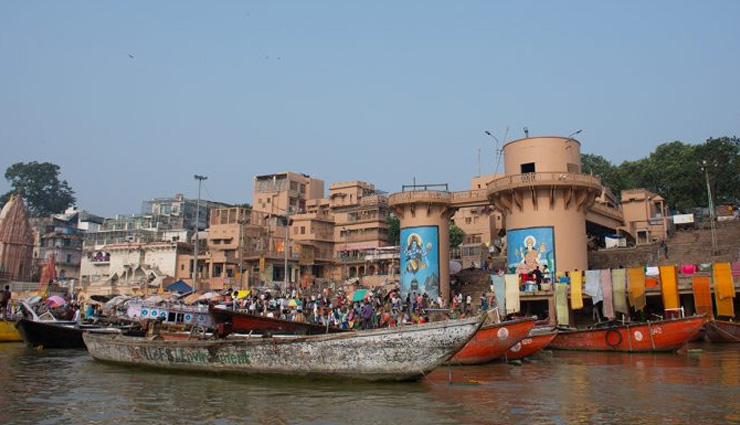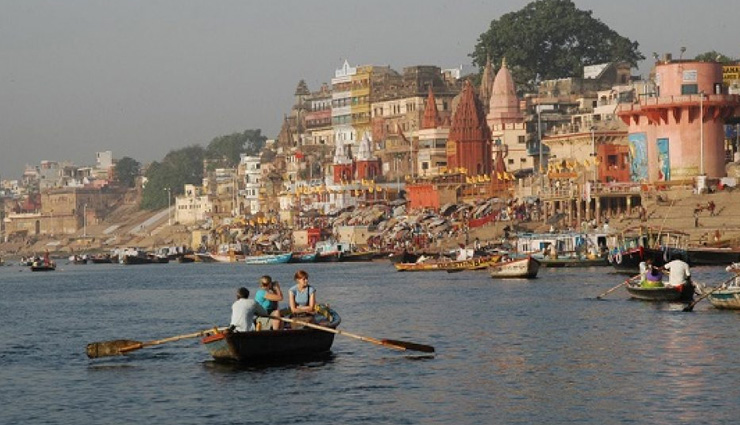Ganga Dussehra 2020- 5 Least Known Facts About Ganga
By: Priyanka Maheshwari Mon, 01 June 2020 10:12:06

The River Ganges, also known as the Ganga, flows 2,525 kilometers (1,569 mi) from the Himalaya mountains to the Bay of Bengal in northern India and Bangladesh.The Ganges River begins in the Himalayas’ Gangotri Glacier. The glacier sits at an elevation of 3,892 meters (12,769 feet).
The River Ganges flows through the countries of India and Bangladesh.For most of its course the Ganges flows through Indian territory, although its large delta in the Bengal area, which it shares with the Brahmaputra River, lies mostly in Bangladesh.It is the third largest river in the world by discharge.
The major rivers which flow into the Ganges are: Ramganga, Gomti, Ghaghara, Gandaki, Burhi Gandak, Koshi, Mahananda, Tamsa, Yamuna, Son, and Punpun.The Ganges Basin with its fertile soil is instrumental to the agricultural economies of India and Bangladesh. We have always considered Ganga and its water to have extraordinary powers and here are top 5 little known facts about Ganga that will prove it truly is one of its kinds in the world.

* Shifting of rivers is nothing new, but Ganga in Haridwar has shifted from its original course by 500 meters in the past few decades. If this trend continues it can spell havoc for many settlements and farmers down the Gangetic plains. Most of it is natural, but pollution and deforestation are also to be blamed in here. Experts believe Ganges is moving eastward towards Bangladesh. The shift has become more pronounced in the last three decades.
* In Bihar, some parts of the river have shifted more than 2.5 km since 1990. Due to this trend, a sizeable number of urban populace now find it difficult to trek long distances and prefer to perform Chhath Puja rituals at makeshift water bodies like ponds or lakes or remain confined to their rooftops.

* It is difficult to ascertain the sheer size of Ganga just with a glance at a piece of paper. Ganges river system is a very complicated, especially in the delta region. Its complex tributaries and bifurcations in Bengal make it very difficult to determine its exact length. However, it is believed to be slightly over 2,500 km in length. The Ganges Delta formed mainly by sediment-laden flows from Ganges and Brahmaputra rivers is the world’s largest delta. It covers an area of about 59,000 km2. Only the Amazon and Congo rivers have a greater average water discharge than the combined outflow of Ganges-Brahmaputra river system.
* River waters usually tend to putrefy when the lack of oxygen promotes the growth of anaerobic bacteria that lends the water a distinct smell and stale taste. The water of Ganga though considered one of the dirtiest, does not tend to putrefy over longer periods of storage. In fact, British Physician, C.E. Nelson, observed that the Ganga water taken from Hooghly river (one of its dirtiest mouths) by returning ships to England remained fresh throughout the voyage.
* Anti-putrefaction Properties of Ganga was the reason East India Company ships only used water from Ganges for drinking purposes on their 3-month long voyage back to England because it stayed “sweet and fresh.” In a study conducted by Malaria Research Center in New Delhi it was observed that water from upper ambits of Ganga did not host mosquito breeding, and also prevented mosquito breeding in any water it was added to.





